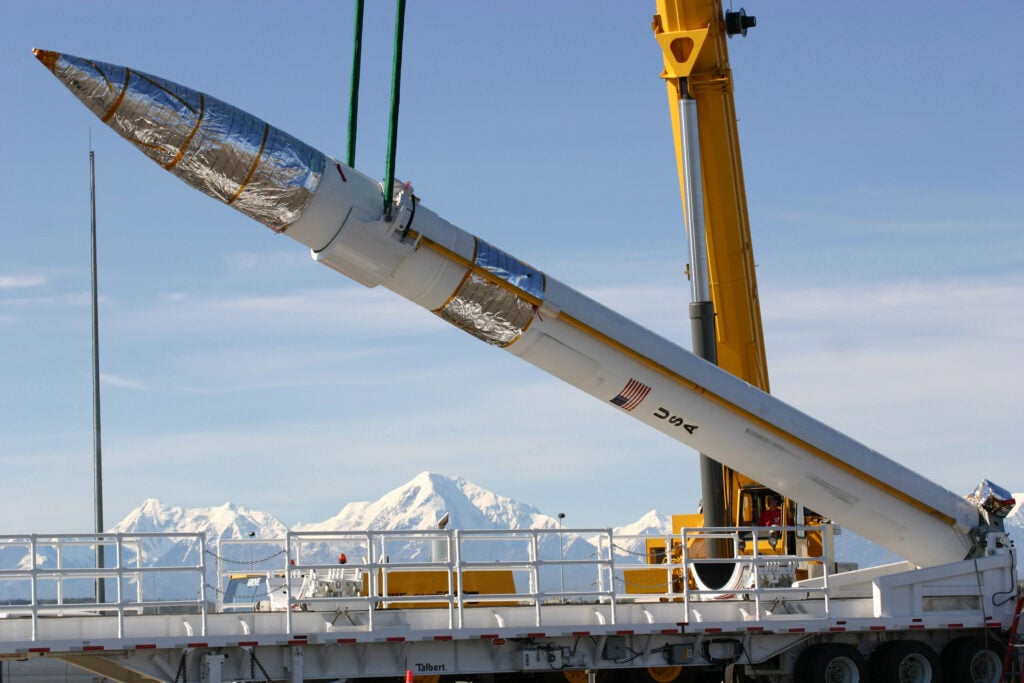DepSecDef Explores New Missile Defense Approach
Posted on

A Ground-Based Interceptor is lowered into its missile silo in Alaska.
HUNTSVILLE, ALA.: What does the NORAD commander think of America’s current approach to missile defense? “Not only is it unaffordable, it will not work,” Adm. Bill Gortney said. “We are going to lose this fight on our current strategy.”
“We’ve made incredible strides in missile defense,” acknowledged Gortney, who heads both NORAD and US Northern Command (NORTHCOM). But no matter how good our interceptors are, he said, we’ll never have enough of these expensive systems to shoot down every cheap incoming missile.
(Gortney is not the first senior commander to call the current missile defense approach untenable. Outgoing Army Chief of Staff Gen. Ray Odierno and Chief of Naval Operations Adm. Jonathan Greenert wrote former Defense Secretary Chuck Hagel in November last year that the US needed to do a reassessment of our missile defense approach.)
That requires rethinking what missile defense means, as urged by the outgoing chiefs of both the Army and Navy. First, we need to devote more effort to the best defense, destroying or disabling adversary missiles before they fire — what’s called “left of launch.” Second, we need to invest in a global network that can transmit accurate targeting data from sensors to shooters, no matter where they are or what military service they belong to.
These two pieces seem to be connected. Adm. Cecil Haney, chief of US Strategic Command, told reporters at the Space & Missile Defense conference here that the effort to share more targeting data was not strictly limited to air and missile defense. While neither he nor Gortney said so, that raises the possibility that the initiative has an offensive element: It could easily involve data not only about inbound missiles — “right of launch” — but also about their launchers and targeting systems — “left of launch.”

Robert Work
Working With Work
At a recent meeting with Robert Work, the tech-savvy Deputy Defense Secretary, Admirals Haney and Gortney, European Command’s Gen. Philip Breedlove and Pacific Command’s Adm. Harry Harris, agreed to make data sharing a top priority to make the best of the sensors and weapons we currently have.
“That was one of the things we think we need to really invest in [to] get firing-quality track data…. for all the domains,” Gortney told the Space & Missile Defense conference here. The Navy’s invested heavily in its NIFC-CA system (Naval Integrated Fire Control – Counter-Air), he said: “We need to do that across DoD.”
The military’s been grinding away at data-sharing for at least a decade, said Adm. Haney, but what was significant about the recent meeting “was really having more than one combatant command sign up for moving forward with this.”
Haney refused to discuss details, saying they were classified. He assured reporters there’s “ongoing” work to improve data sharing, particularly of data precise enough to use for targeting.
Is this effort only for integrated air and missile defense, one reporter asked, or a larger command-and-control project? “I would put it in a larger category,” Haney said.
Despite the breadth and complexity of the project, Adm. Gortney argued data-sharing is doable. “We have the technology. The technologies are probably all out there. It’s getting it aligned,” he said. In the Navy’s experience with NIFC-CA, he said, “technology wasn’t the limiting factor, it was the doctrine, training, and tactics.”
Likewise, Gortney said, we have a lot of intelligence data, but our processes don’t necessarily get it to decision-makers fast enough to matter. “We might have the intelligence [already],” he said, “[but] we leave more good targeting-quality data on the cutting room floor than we think we do.”
Intelligence data is critical, Adm. Haney agreed. “When you really look at ‘left of launch,’ it does involve having a rather deep understanding of your adversary first and foremost…. even before it [the missile] is on the launch pad,” he said. “If it’s going upright and it has a target that we care about in its system, to me we’re a bit late to the problem — and that’s why the offensive capability of our whole military apparatus is important.”
Offense, not defense, is the oldest approach to stopping enemy missiles. “The threat originally manifested itself in 1944 with the V-2,” Adm. Gortney said. The allies had no way to intercept the world’s first ballistic missile, he said, so “they had to get left of launch. They had to go after the manufacturing facilities… and the launchers.”
Subscribe to our newsletter
Promotions, new products and sales. Directly to your inbox.
